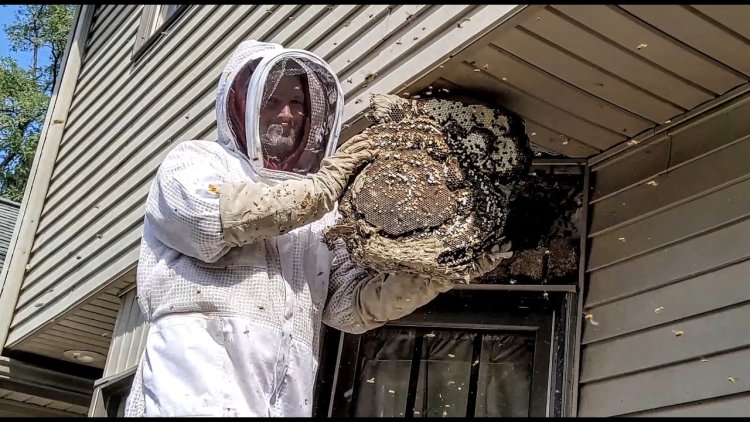Why Bees Nest in Window Frames and How to Prevent It Naturally
Learn why bees nest in window frames and discover natural, eco-friendly methods to prevent infestations safely with professional guidance.

Bees play an essential role in maintaining ecological balance, contributing to pollination and the production of food crops worldwide. However, when they choose to build nests near or within human living spaces—especially in areas like window frames—the situation can quickly become uncomfortable and even hazardous. Understanding why bees favor these particular locations and how to address their nesting habits naturally helps maintain harmony between humans and these valuable pollinators. Through mindful prevention methods, homeowners can protect their properties while ensuring the bees remain safe and unharmed.
Bees often select nesting sites that offer protection, warmth, and accessibility. Window frames, particularly wooden ones, provide all three of these desirable conditions. The narrow cavities, insulated spaces, and limited human disturbance make them perfect shelters for small colonies seeking refuge. Moreover, during spring and early summer, bees are most active in finding nesting spots to support their reproduction cycles. As outdoor temperatures rise, the shaded comfort and structural gaps around window frames attract them as safe places to begin hive construction.
Another reason bees are drawn to window frames is the scent of wood or paint residue. Certain materials mimic natural tree hollows or bark textures, creating an inviting environment for bees to build their hives. In addition, flowers planted near windows can unintentionally increase bee activity in those areas. Bees follow floral scents and sometimes rest near the source of nectar, only to discover potential nesting cavities nearby.
Ethical Environmental Bee Prevention
While the presence of bees around your home may seem bothersome, their ecological contributions cannot be overstated. Bees are responsible for pollinating nearly one-third of the food humans consume, including fruits, vegetables, and nuts. Their decline due to habitat loss, pesticides, and climate change poses serious environmental risks. Therefore, removing or deterring bees must always be done humanely, ensuring their survival while keeping your home safe.
Ethical prevention strategies focus on gently redirecting bees rather than exterminating them. Instead of using harsh chemicals, which can harm both bees and surrounding ecosystems, homeowners can employ natural repellents or deterrents. For instance, certain scents—like peppermint, cinnamon, and citrus—naturally discourage bees from nesting in specific areas. These aromas interfere with their communication signals, leading them to seek alternative, safer habitats.
By adopting natural preventive methods, homeowners not only protect their living spaces but also contribute positively to environmental preservation. Bees are an integral part of nature’s delicate balance, and maintaining coexistence with them reflects responsible and sustainable living.
Natural Methods to Prevent Bees in Window Frames
Preventing bees from nesting in window frames begins with identifying potential entry points. Inspecting the perimeter of windows regularly helps locate cracks, gaps, or unsealed spaces that bees might exploit. Once found, sealing these openings using caulk or weatherstripping materials can effectively block access. This simple step prevents bees from finding suitable spaces for hives while also improving insulation and reducing drafts.
Natural repellents can also play a vital role in discouraging bee activity. Essential oils like peppermint, eucalyptus, and tea tree oil have strong scents that bees dislike. Mixing a few drops of these oils with water and spraying around window frames creates an invisible barrier that deters them. Additionally, vinegar and citrus peels work similarly, providing a non-toxic alternative that’s safe for pets, children, and plants.
Homeowners should also consider the landscaping around windows. Flowers and plants that attract bees should be positioned farther away from window areas. Relocating flowering plants even a few meters from windows can significantly reduce bee traffic and potential nesting attempts. For those who wish to maintain garden aesthetics, opting for bee-deterring plants such as marigolds or lemongrass offers a decorative yet functional solution.
It’s important to remember that prevention should always come before removal. Once bees have established a nest inside window frames, removing them without professional help can be risky. Disturbing an active colony may lead to defensive behavior, including stings, and could cause structural damage if the hive is deeply embedded.
When to Seek Professional Services
Despite preventive efforts, bees sometimes establish nests in hard-to-reach areas within window frames. In such cases, professional assistance is crucial for safe and effective removal. Attempting to eliminate the hive independently often results in incomplete removal or unnecessary harm to the bees. Professionals use specialized equipment and eco-friendly techniques to extract and relocate colonies without endangering people or property.
During the process of hiring experts, homeowners often wonder about the cost and reliability of such services. Reputable companies offer transparent pricing and humane relocation methods, ensuring a sustainable approach. In some regions, particularly in areas where bee populations are protected, working with certified experts becomes a legal requirement. Therefore, consulting professional bee removal services ensures not only safety but also compliance with environmental regulations. These experts also educate homeowners about preventive maintenance, helping them safeguard their homes from future infestations.
Furthermore, professional services go beyond simple removal; they assess the structure of your window frames and surrounding areas. This inspection helps identify potential vulnerabilities that may attract new colonies later. With their guidance, homeowners can apply preventive measures tailored to their property, ensuring long-term protection and peace of mind.
Maintaining Bee-Free Window Frames Naturally
Long-term prevention involves a combination of maintenance, vigilance, and natural deterrents. Regularly cleaning and inspecting window frames prevents buildup of debris, moisture, or residues that attract bees. Bees often gravitate toward neglected areas where they can find warmth and protection. Keeping these spaces clean and dry significantly reduces their nesting interest. Applying wood sealants and natural oils to wooden frames not only enhances appearance but also discourages bee activity. Bees prefer untreated wood, which resembles natural tree cavities. Thus, polished and sealed surfaces are less likely to become targets for nesting. Homeowners can also integrate light-colored paints, as bees are generally drawn to darker shades that retain warmth.
Another important consideration is environmental awareness. Encouraging bees to nest in more suitable locations benefits both homeowners and ecosystems. Installing bee houses or hives at a safe distance from residential structures offers bees an alternative space. These setups allow them to continue pollinating nearby flora while staying clear of human living areas. This mutually beneficial approach ensures that nature and home environments coexist harmoniously.
Ultimately, managing bee nests in window frames requires a thoughtful balance between preservation and prevention. By combining natural repellents, structural maintenance, and professional guidance when needed, homeowners can create safe and comfortable living spaces without disrupting nature’s rhythm. Bees remain free to thrive where they belong—in gardens, fields, and forests—while households remain secure and serene.
Coexisting Safely with Bees Near Home Spaces
Understanding why bees choose window frames and how to prevent their nesting naturally is essential for sustainable living. Rather than viewing them as threats, homeowners can see bees as vital allies in maintaining ecological harmony. By implementing gentle, eco-friendly strategies, it’s possible to prevent unwanted nesting while respecting their role in nature.
Natural deterrents, maintenance practices, and professional assistance together form the foundation of effective bee management. With these measures, families can enjoy their homes without fear of stings or damage, while bees continue to flourish in appropriate environments. The goal is not eradication but coexistence—a principle that protects both human comfort and environmental well-being.


 madeline23
madeline23 



















